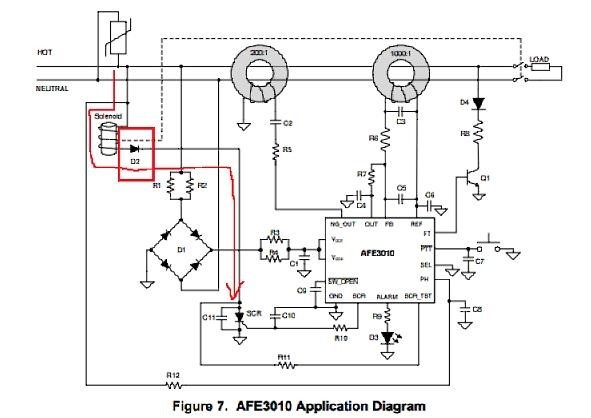Other Parts Discussed in Thread: AFE3010
Hi Team,
Regarding the test of the AFE3010 experiment board, we found a question, "When we actually take the relay to test, we will hear that the relay cannot be continuously turned on, and there will be a click of the switch", of this relay are there a suggested part number?
Please refer to the red line in the figure below. We found that the Relay coil power supply (Solenoid) part, the circuit diagram, and the experimental evaluation board only put a diode (D2) for rectification. How does this configuration maintain the continuous excitation of the relay coil?


